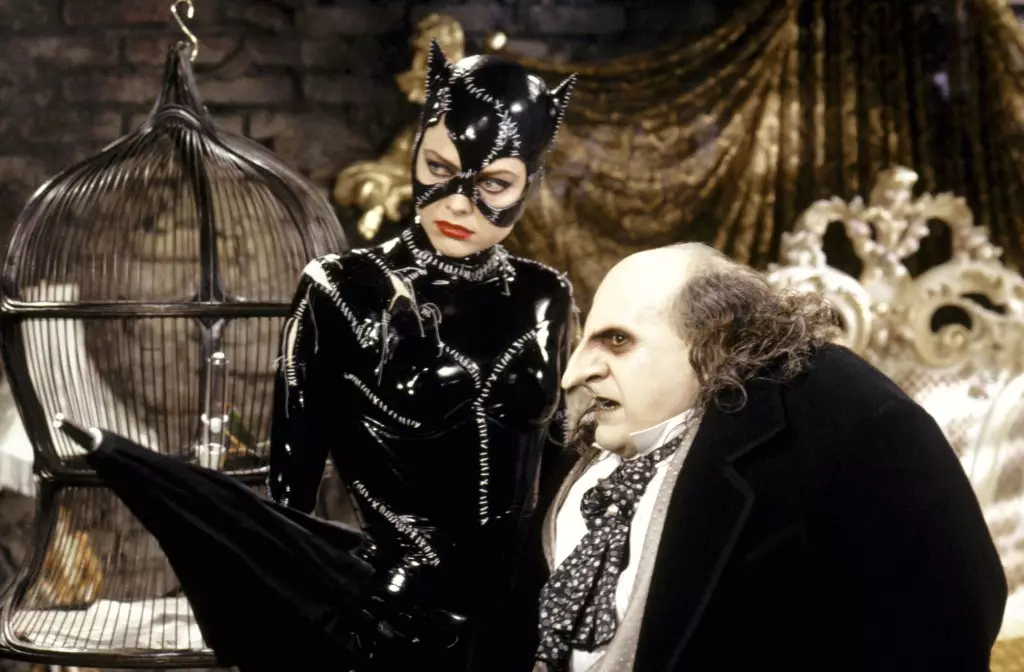In a recent discussion at the Egyptian Theater, screenwriter Daniel Waters revealed the stark contrast in visions for the proposed “Catwoman” spinoff from the 1992 film Batman Returns. While director Tim Burton envisioned an intimate black and white drama paying homage to Jacques Tourneur’s 1942 horror film, Cat People, Waters had his sights set on a satirical take set in a Los Angeles version of Gotham City. These conflicting ideas not only shed light on the creative dynamics behind the scenes but also highlight the challenges faced in developing a compelling spinoff story.
Burton’s original concept for the “Catwoman” spinoff would have taken a subdued approach, showcasing Selina Kyle (aka Catwoman) living a quiet life in a small town. This idea was strongly influenced by the black and white aesthetic and atmospheric tone of Cat People. In contrast, Waters aimed to explore the metaphor of Batman by placing Catwoman in a bustling and corrupt Los Angeles, where she confronts three morally compromised superheroes. Waters drew parallels to the popular series “The Boys” long before its time. Ultimately, it seems that Waters’ script overwhelmed Burton, leading to a different direction for the project.
Waters also disclosed that his original script for Batman Returns contained several jabs at Burton’s first Batman film, which he openly admitted was subpar. However, Michael Keaton, who portrayed Batman, recognized the cleverness but advised Waters to remove the jibes. This highlights the collaborative nature of the filmmaking process, as Keaton’s input ultimately shaped the final product.
Additionally, Waters confessed to a lack of research into the Batman canon, resulting in significant deviations from the original comic books. In the era before widespread internet accessibility, there was no need to justify creative choices to a global audience, allowing Waters and Burton to riff and explore their ideas freely. However, this creative liberty came at the expense of missing out on key knowledge about Batman’s rich history. Waters’ revelation about misinterpreting DC Comics as Detective Comics exemplifies the extent of their unfamiliarity with the source material.
The unorthodox approach taken in Batman Returns, as evident by the backlash from fans, is indicative of the bravery and risk the creative team undertook. In the eyes of Batman aficionados at the time, the second film in the franchise was already veering off the established path. However, as Waters highlights, the landscape has drastically changed since then, with a multitude of Batman movies embracing different interpretations of the Caped Crusader. It is a testament to the enduring legacy of the Dark Knight that a character with such longevity can withstand and thrive through diverse cinematic iterations.
Despite the criticisms and challenges faced by the creative team of Batman Returns, the film remains an influential entry in the Batman film canon. Waters’ revelations provide valuable insights into the intricate development process and shed light on the delicate balance between artistic vision and staying true to established source material. The “Catwoman” spinoff, with its two contrasting takes and the clash of creative ideas, showcases the evolution of filmmaking and the constant need to push boundaries while respecting the essence of beloved characters.
In retrospect, the challenges faced by Waters and Burton in bringing Catwoman to the big screen ultimately revealed more about the complexities of adaptation and the art of storytelling. The legacy of Batman Returns stands as a testament to the resilience of filmmakers in crafting unique narratives within established franchises.

Leave a Reply